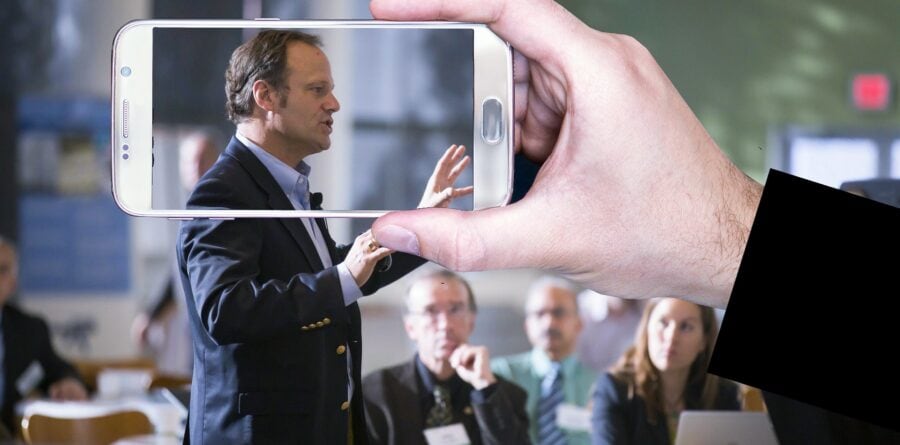Top 5 tips to start making your own videos
17/02/2021 - Red Cactus Media

You know the stats, don’t you? In 2019, on average people spent 84 minutes watching online videos every day. Predictions suggest that in 2021 people will be watching over 100 minutes of video — that’s over one and half hours of video viewing a day!
That’s a lot of viewing. And since Covid-19, 72% of people now say they’d rather learn about a new company, service, or product through video, with 53% suggesting they will then go on to visit the website after.
So, what does this all mean? It means you need to be making videos – a lot of videos!
With so many inspirational videos already circulating, it may seem daunting to know where to begin. First things first – what’s your subject area?
Obviously, I’m a video content specialist, so I’m offering you advice of how to get started in this sector, but you may be a life coach, a business owner or a health and wellbeing specialist. Using video is a great way to show people how you can help them, whilst demonstrating your knowledge and thought leadership using the most popular form of communication.
So, here’s Red Cactus Media’s top 5 tips to get you started in the world of video:
1. Phone v Camera
There are so many incredible cameras out there to choose from, but trust me, you don’t need to bother. It is better to just start filming, than worry about which camera is best. A smartphone has the ability to capture great videos — it’s more a matter of how to use them, that makes the real difference. Obviously, the more skilled and involved you become in video content curation, the more you’ll start to understand and appreciate why certain cameras are better than a smart phone. But to begin with, you just need to get filming! It is far worse to sit at home going through hundreds of reviews regarding specialist camera stuff and not actually create your first video, than to create a slightly less than perfect film.
2. Lights
I highly recommend an LED ring light to illuminate that gorgeous face of yours. Smart phones don’t have enough power in them to combat poor lighting, so you need to create your own. Many lights simply clip onto your computer or stand alone. Also, you should try and film in rooms which have as much natural light as possible. If you have a well-lit room, you should position yourself by the window, rather than in front. This directs the light at you, rather than casting you in shadow which occurs if you sit directly in front of the window. Or, if you’re wanting a more personal headshot style video, dark rooms with you illuminated by the LED ring light, work well.
3. Microphone
Next, you require a microphone – you can purchase the sort which resembles a furry badger stuck on a pole (the “badgers” are officially called wind muffs…so stop sniggering). This variety of mic will block the wind from hitting the microphone and therefore reduce wind noise and interference in your video, which is fab if you are recording outside.
However, if you’re isolated in your flat this is an unnecessary badger cull, and just a simple microphone, such as a Lavalier mic will suffice. These are the small, discreet ones which clip onto lapels, leaving hands free — you’ll have seen TV presenters and commentators wearing this sort.
What is important, is that you have a microphone and don’t rely on the one in your phone; they’re not strong enough for your needs. Audiences, to an extent, will forgive poor editing and video skills, but if they can’t hear you and you haven’t added subtitles – frankly what is the point? Audience’s do not respond well to bad audio and simply switch off.
4. Tripods
Tripods stabilise your phone, so you don’t appear shaky and amateurish, leaving you to get on with talking or demonstrating. For example, if you’re a business coach you can easily talk to the camera whilst using a white board or any other prop you may require to help your audience. There’s a myriad of tripods available, but when starting out I recommend this smartphone camera video microphone kit. For around £60 you receive a microphone, LED light and adjustable tripod with phone holder, all of which is compatible with phones, cameras, and computers. Absolutely everything you need to get started!
5. Content
You’ve got the kit, and now people need to meet and understand a little about you and what makes you tick. Tell people fun or interesting facts — it doesn’t matter if you haven’t climbed Mount Kilimanjaro, it might be that you’re still over the moon you saw David Bowie in a shop ten years ago or that you’ve just taught your four year old to ride a bike. Just be you.
Then explain the type of video content you will be producing in the future and how it’s going to help your target audience.
Ta Dahhh! First video completed!
For your next video you can explain why you work in your field, provide industry insights, or even share your favourite book – you’ll be bringing value to your audience and they’ll appreciate your thoughts.
We are always happy to chat if you want to know more about the types of video that can help your business with a free consultation. Drop our award-winning producer, Remi Morrison a line on remi@red-cactusmedia.com
Remi Morrison, runs Red Cactus Media a video production company helping businesses and campaign in Suffolk and Essex increase sales and awareness through video content that inspires change
Follow Red Cactus Media on our socials @redcactus1 on Instagram and @RedCactus_Media on Twitter for more video tips.
Red Cactus Media video production company goes beyond simply providing services to becoming a true partner of the customers supporting their video and digital ambitions.
Written by Frances Piers-Hall
All articles on this news site are submitted by registered contributors of SuffolkWire. Find out how to subscribe and submit your stories here »



